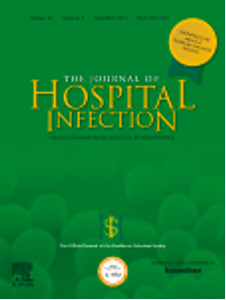Did you know that improper Hand-drying in public washroom facilities, especially in healthcare settings, could seriously affect your health?
Jet air and warm air driers contaminate air in washrooms and may be unsuitable for use in healthcare settings
Read more here below:
The peer reviewed study, performed by Prof. Mark Wilcox of the Leeds University and Leeds Teaching Hospitals NHS Trusts, concludes that jet air and warm air hand driers have a greater potential to contaminate washrooms by spreading bacteria into the air and onto users and bystanders. The findings have significant implications for infection control health professionals and purchasing managers responsible for equipping hospital washrooms.
Designed and led by expert medical microbiologist Professor Mark Wilcox, of University of Leeds and Leeds Teaching Hospitals, and funded by ETS, the study compared the propensity of three commonly used methods of hand drying to aerosolise bacteria. Jet air driers were found to disperse more bacteria-carrying droplets and spread them further than either warm air driers or paper towels. In addition, bacteria were found to persist in the washroom air for a considerably longer time after the jet air drier stopped.
The study, recently published in the Journal of Hospital Infection, was presented at the 9th Healthcare Infection Society (HIS) International Conference in Lyon, November 16-18, 2014.
This biennial event gathers some 1000 professionals from around the world including epidemiologists, microbiologists, public health practitioners and directors of infection
prevention and control, to discuss the very latest research and best practice in infection prevention and control.
The complete title of the study is: Microbiological comparison of hand drying methods: the potential for contamination of the environment, user and bystander. E.L. Best,1 P. Parnell,1 M.H. Wilcox 1,2 – Microbiology Department, Old Medical School, Leeds General Infirmary, Leeds Teaching Hospitals NHS Trust1 & University of Leeds,2 Leeds LS1 3EX, UK.
The complete study can be downloaded, at a cost of $ 35,95, at http://authors.elsevier.com/sd/article/S0195670114002461
Airborne dissemination
In carrying out the study, gloved hands were contaminated with a harmless strain of Lactobacillus, an organism not normally found in washrooms. This was done to mimic the bacterial burden on poorly washed hands. Subsequent detection of Lactobacillus in the air proved that it must have come from the hands during drying. Researchers measured the air around the driers and also at distances of one and two meters away. Bacterial counts in the air close to jet air driers were found to be 4.5 times higher than around warm air driers and 27 times higher compared with using paper towels. Next to the driers, bacteria persisted in the air well beyond the 15 second hand drying time, with approximately half (48%) of the Lactobacilli collected more than 5 minutes after drying ceased. Lactobacilli were still detected in the air 15 minutes after hand drying (20% of the total recovered lactobacilli for the jet air drier).
Please read the articles, in different languages, which summarize the study and watch or download the Infographic about the study.
English:
press Release Leeds study English
Leeds study Infographic English
German:
Press Release LeedsAirStudy German
Leeds study Infographic German
French:
Press Release LeedsAirStudy French
Leeds study Infographic French
Italian:
Press Release LeedsAirStudy Italian
Leeds study Infographic Italian
Spanish:
Press Release LeedsAirStudy Spanish
Leeds study Infographic Spanish
Polish:
Press Release LeedsAirStudy Polish
Leeds study Infographic Polish
Dutch:
Press Release LeedsAirStudy Dutch
You can also watch a Video of Prof. Mark Wilcox’s interview with BBC at the link: https://www.youtube.com/watch?v=orAcSHwYTms
This page is also available in: French German Italian Polish Spanish













